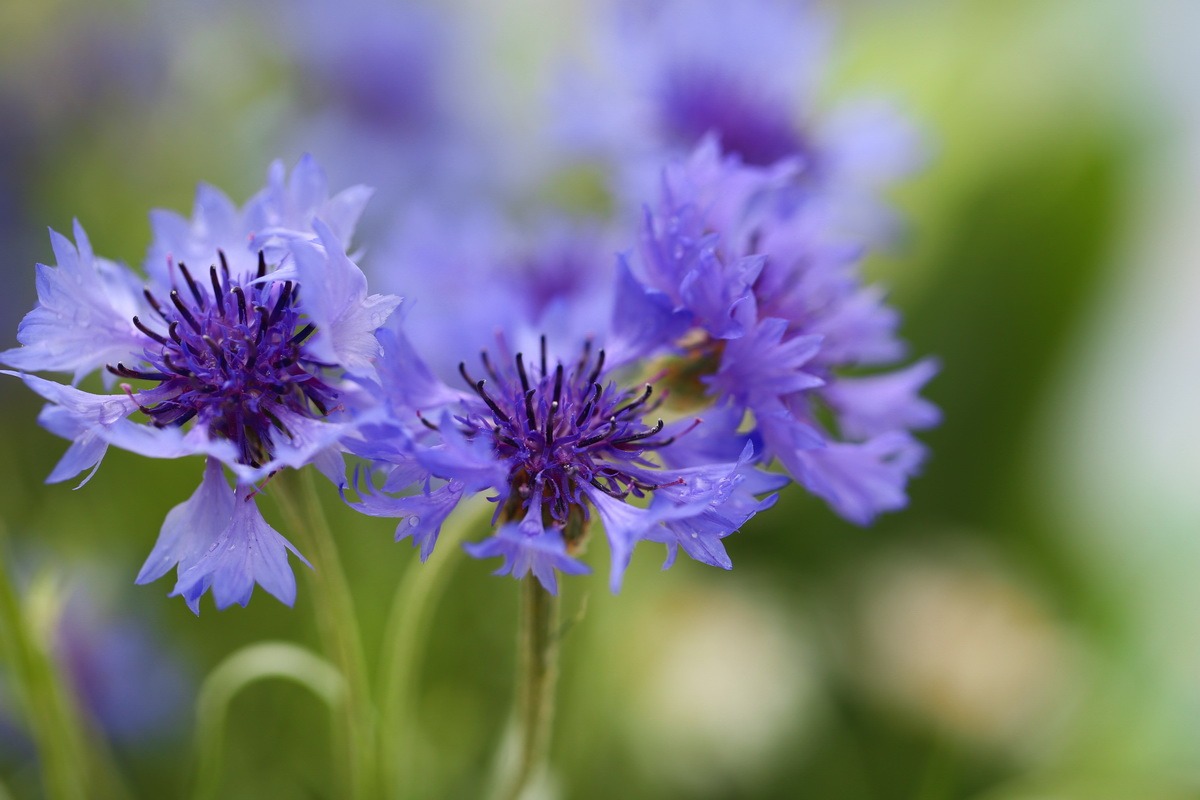Cornflower is a well-known weed plant. It has a second name Cyane. The botanical name is centaurea cyanus. In Europe it is found only in the eastern part, in Russia it grows almost everywhere. Little is known as a medicinal plant, but in the folk medicine of the peoples of Russia, preparations made from blue, peripheral tubular flowers from the flower heads of the cornflower have been valued for a long time.
In the official pharmacopoeia, cornflower extracts are used for edema, as an anti-inflammatory, choleretic and general tonic. However, official medicine focuses on the use of cheap herbal preparations from cornflower, and oil extracts are used extremely limited. In herbal preparations, anthocyanins are the main active ingredients.
Concentrated 100% CO2 Cornflower Extract is a fairly viscous, oily liquid with a slightly herbal-floral aroma and a greenish-brown color. In dilute solutions, the color and aroma are less pronounced. It is able to normalize fat metabolism, helps cleanse the body of toxins and normalizes estrogen balance.
The biological activity of cornflower CO2 extracts is determined by the fact that it combines a high concentration of flavones and flavonols with P-vitamin activity.
Cornflower oil extracts are not used in the food industry, while hydrophilic extracts are used in the confectionery industry as red and blue pigments.


Chart 1. Main components of cornflower CO2 extract
| NAME | CONTENT IN% OF THE AMOUNT OF VOLATILE COMPONENTS | EFFECT |
|---|---|---|
| Hispidulin | 2,2 | Acts bactericidal. |
| Isorhamnetin | 2,1 | Pacemaker. |
| Quercetin | 2,1 | Antioxidant, antispasmodic. |
| Kaempferol | 1,8 | Tonic, strengthens the capillaries. |
| P-coumaric acid | 1,3 | Hepatoprotector. |
| Luteonin | 1,3 | Anti-inflammatory. |
| Rutin | 1,2 | Capillary Strengthening (Vitamin P). |
| Scopolamine | 0,6 | Choleretic. |
| Chlorogenic acid | 0,6 | Antimicrobial. Ingredient in perfumery. |
| Caffeic acid | 0,5 | Immunomodulator. |
In total, more than 60 compounds with biological activity have been identified in the CO2 extract of the cornflower.
In cosmetics, CO2 extract from cornflower is valued as an antioxidant supplement, as well as:
- wetting agent
- a means of normalizing the water-lipid balance
- decongestant
- Means for stimulating collagen formation
- Means for activating microcirculation.
Recommended for use in cosmetic emulsion products to care for sensitive, dry skin, especially in areas prone to edema and swelling.
Chart 2. Application rates, recommendations for use and storage of CO2 extracts
| Food usage rates | The recommended range of application amounts for the most popular 10% oil solutions of CO2 extracts among cosmetic industry technologists (item A10 according to our internal classification) is 0.05-0.5% of the mass of the finished product (0.5-5 g /kg or 0.5-5 kg/t). For extracts from solutions of other concentrations (A1-A100), the application rates must be recalculated proportionately. |
| Recommendations for use | It is recommended to add CO2 extracts in the final stages of preparation, in the cooling phase of the end product. |
| Storage Instructions | It is recommended to store CO2 extracts in a closed container in a cool room and avoid direct sunlight. |
Historical reference

According to the ancient Greek legend, the “flower of the centaur” or centaur, hence the Latin name of the cornflower – centaurea (the scientific name of the cornflower is Centaurea cyanus), was in the medicinal arsenal of the centaur Chiron.
The ancient centaur had the gift of healing, treatment with ointments, herbal infusions, and one of his favorite plants was the “Centaurea” – cornflower. He found that the sap of the cornflower, especially Centaurea jacea, had the precious property of healing wounds, and he used it to heal the wound inflicted by the poisoned arrow on Hercules. This was the reason for the plant’s name Centaurea. The second half of her name – “cyanus” – simply means “blue” in Latin, the color characteristic of our flower.
